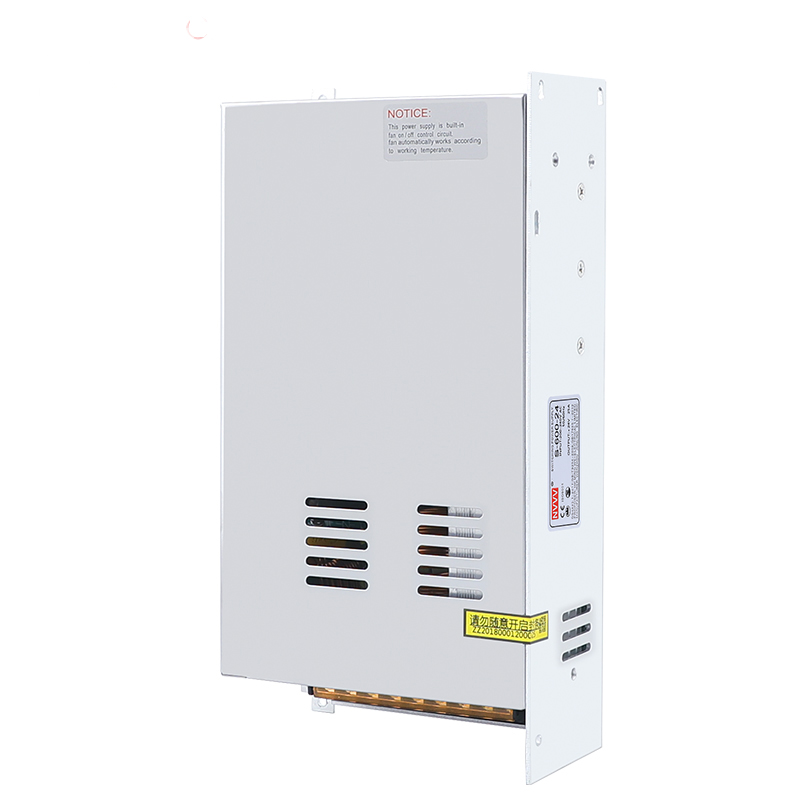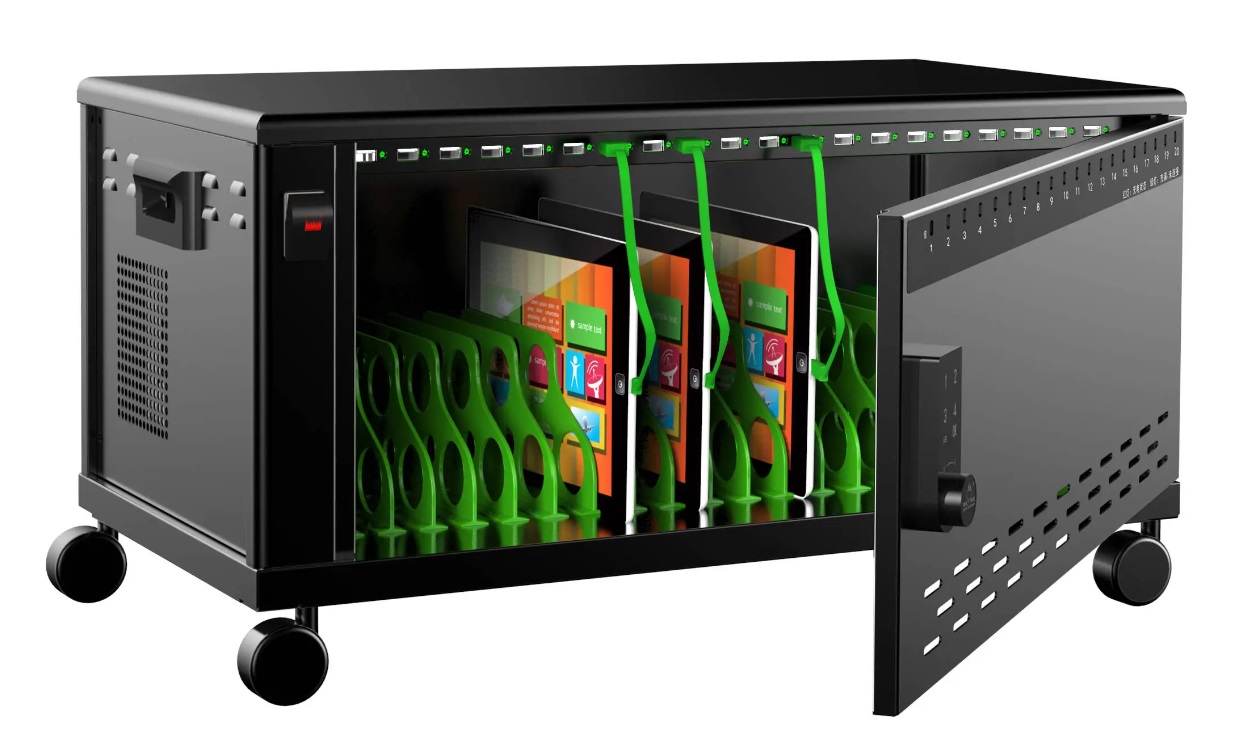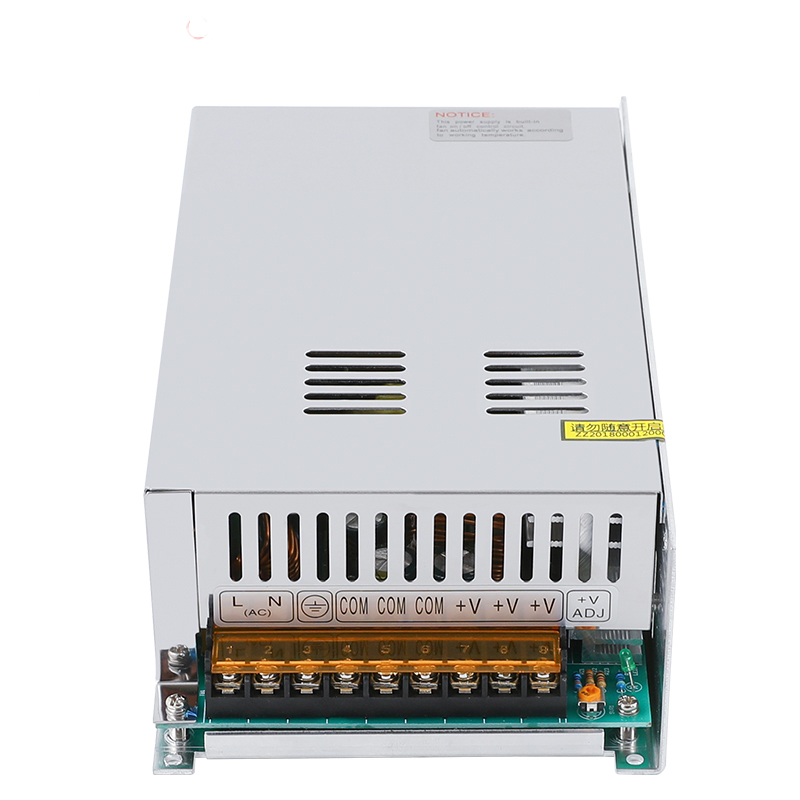Why use switched-mode power supply(SMPS)?
Switched-Mode Power Supply (SMPS) has become a core component in modern electronic devices and is widely used in various electronic devices, such as computers, mobile phones, televisions, industrial equipment, etc. Compared with traditional linear power supplies, SMPS has many advantages such as high efficiency, small size, and light weight. So, why do more and more devices choose to use SMPS? This article will discuss in detail the reasons for using SMPS and the advantages it brings from several aspects.
1. What is the working principle of the switched-mode power supply?
Before delving into why SMPS is used, it is very important to understand its working principle. SMPS is a power supply device that converts the input voltage to the required output voltage through high-speed switching (usually using transistors or MOSFETs). Its core is to control the output voltage by fast switching and adjusting the duty cycle.
Brief description of working principle
The working principle of SMPS can be divided into the following steps:
Input rectification and filtering: The input AC voltage (AC) is first converted to DC voltage (DC) through a rectifier circuit, and then the fluctuation is removed through a filter circuit to obtain a more stable DC power supply.
High-frequency switching: After the DC voltage enters the main circuit of the switching power supply, the power switching device (such as MOSFET) will switch at a high speed (usually tens to hundreds of kilohertz) to divide the DC into pulse signals. The width of these pulses can be adjusted by pulse width modulation (PWM) to control the size of the output voltage.
Transformation and rectification: After passing through the high-frequency switch, the signal enters the transformer for voltage conversion. The transformer converts the high-frequency pulse signal into the desired voltage according to the design. After that, the rectifier at the output end converts the pulse signal into DC again, and filters it to output a stable DC voltage.
Why is high-frequency switching important?
The core reason for the high efficiency of SMPS is that it uses high-frequency switching. Through high-frequency switching, the size of the transformer and filter components is greatly reduced, and the loss is also reduced. In contrast, traditional linear power supplies lose a lot of energy during the voltage regulation process, resulting in low efficiency.
Formulas and calculation examples
Assume that the input voltage of an SMPS is 220V AC, and the DC voltage obtained after rectification is 300V DC. Assuming that the operating frequency of the power switching device is 100kHz and the pulse width modulation control duty cycle is 50%, the output voltage is calculated as follows:
V(out)= D × V(in)
Where,
V(out) is the output voltage,
D is the duty cycle, and
V(in) is the input voltage.
Substituting the values:
V(out)=0.5×300V=150V
By adjusting the duty cycle, SMPS can flexibly output different voltages, which is one of the reasons why it is suitable for a variety of application scenarios.
2. Why is SMPS more efficient than traditional linear power supplies?
One of the major advantages of SMPS is its high efficiency. So why is its efficiency significantly higher than that of traditional linear power supplies?
Low efficiency of linear power supplies
In linear power supplies, voltage conversion is achieved by reducing the input voltage. Assuming the input voltage is 220V and the output voltage required by the device is 5V, the linear power supply provides a stable 5V voltage by adjusting the voltage difference, but a large amount of electrical energy will be converted into heat and wasted. In simple terms, the efficiency formula of a linear power supply is:
Efficiency = output power/input power
Take an example: Assuming the input voltage is 220V, the output current is 1A, and the output voltage is 5V, then the input power of the linear power supply is:
P(in) =220V×1A=220W
And the output power is:
P(out) =5V×1A=5W
Therefore, the efficiency of a linear power supply is:
Efficiency = 5W/220W≈2.27%
This extremely low efficiency is mainly because a large amount of electrical energy is wasted in the form of heat.
High efficiency of SMPS
Unlike linear power supplies, switching mode power supply converts voltage by high-frequency switching. Because the switching device has almost no energy loss when it is turned on or off, only a small amount of loss is generated during the switching process. Therefore, the efficiency of SMPS can usually reach more than 80%, and even some high-end SMPS can exceed 90% efficiency.
Taking the same output power and input power as an example, if SMPS is used, the input power can be reduced to about 5.5W, and the efficiency can reach 90%:
Efficiency = 5W/5.5W≈90.9%
Therefore, the advantages of SMPS are obvious: it can not only provide stable power output, but also greatly reduce the waste of electricity, reduce the power consumption and heat generation of equipment.
Benefits of high efficiency
Due to the high efficiency of SMPS, SMPS used in electronic equipment has the following benefits:
Energy saving and consumption reduction: reduce energy waste, reduce the energy cost of enterprises, and meet the requirements of green environmental protection.
Reduced heat generation: high power efficiency, less power loss, less heat generated when the equipment is working, thereby reducing the burden on the cooling system.
Increase equipment life: because of the reduced heat generation, the components of the power supply and electronic equipment are not easily affected by high temperature, and the service life is extended.
3. What are the application scenarios of SMPS?
The wide application of SMPS is due to its high efficiency, lightness and reliability. So, in which specific equipment and fields is SMPS particularly common?
School Network Laptop Charging Cabinet
With the popularity of online education, more and more schools are equipped with network laptop charging cabinets for students' daily learning. The application of SMPS in charging cabinets has the following advantages:
Multiple devices can be charged simultaneously: A charging cabinet may need to charge dozens or even hundreds of laptops at the same time. SMPS can provide sufficient power without increasing the volume of the power supply.
High-efficiency charging: SMPS can dynamically adjust the output power according to the charging needs of each device to ensure an efficient and safe charging process.
Low heat generation: If traditional linear power supplies are used to charge multiple devices at the same time, a lot of heat may be generated, affecting the life of the device. SMPS greatly reduces this problem.
3D printer
3D printing technology has been widely used in the manufacturing industry and personal creative fields, and the stable power supply of 3D printers is crucial to the printing effect. The application of SMPS in 3D printers has the following characteristics:
Precise voltage regulation: The heaters and motors of 3D printers have high requirements for the accuracy of the power supply. SMPS can provide stable and accurate power supply to ensure the consistency of printing effects.
Miniaturized design: Compared with traditional power supplies, switch mode power supply is small in size and can be well integrated into the 3D printer to save space.
High-efficiency operation: The printing process runs for a long time, and the high efficiency of SMPS can save a lot of energy and reduce costs.
Embroidery machine
In industrial production, embroidery machines need to run stably for a long time, and SMPS provides a reliable power supply for embroidery machines:
Stable output: When the embroidery machine runs at high speed, it needs a stable power supply to ensure its complex operation and operating accuracy. The dynamic adjustment function of SMPS ensures this.
Durability: SMPS is very suitable for high-intensity use scenarios in industrial production due to its low heat generation and long service life.
High efficiency and energy saving: The power demand of embroidery machines is large, and SMPS can provide efficient power supply and reduce the operating costs of the factory.
Watering machine
In modern agriculture, the automation of watering machines has greatly improved irrigation efficiency, and SMPS plays a vital role in it:
Intelligent control: Watering machines are usually used in combination with sensors and control systems. SMPS can provide stable power support for these intelligent systems to ensure the normal operation of the system.
Adapt to harsh environments: Agricultural equipment often works outdoors. SMPS has strong environmental adaptability and can operate stably under harsh conditions such as high temperature and humidity.
Energy saving and environmental protection: Agricultural irrigation systems have huge energy demands. The efficient operation of SMPS can help farmers reduce energy consumption and achieve sustainable agricultural development.
4. Why do more and more devices choose to use SMPS?
In summary, the advantages of SMPS are obvious, but in addition to high efficiency and energy saving, why do more and more equipment designs begin to widely use SMPS?
Lightweight and compact, suitable for modern equipment design
Compared with traditional linear power supplies, switching mode power supply achieves voltage conversion through high-frequency switching and does not require large transformers like linear power supplies. Therefore, the size and weight of SMPS are significantly reduced, which is particularly suitable for devices with strict requirements on size and weight, such as laptops, smart phones, etc.
Provide multiple output voltages to meet multiple needs
SMPS can flexibly output multiple voltages by adjusting the duty cycle. This allows it to be widely used in various scenarios from low-voltage electrical appliances to high-voltage industrial equipment to meet the needs of different equipment. Traditional linear power supplies are more limited in this regard.
Dynamically adjust output to adapt to load changes
Modern electronic devices have large load changes, especially those with frequent power fluctuations, such as computers and communication equipment. SMPS can quickly respond to load changes, dynamically adjust output voltage and current, and ensure stable operation of the equipment. Linear power supplies usually react slowly and have difficulty coping with frequent power fluctuations.
Improve overall equipment reliability
SMPS can significantly improve the overall reliability of the equipment due to its low heat generation and high efficiency. Reduced equipment heat generation can not only extend the service life of electronic components, but also reduce the burden on the cooling system and reduce the incidence of system failures. This is also one of the important reasons why many high-precision equipment and industrial equipment choose SMPS.
Conclusion
Switch mode power supply (SMPS) has become an indispensable power supply solution in modern electronic devices due to its many advantages such as high efficiency, low heat generation, light weight, and dynamic adjustment. Whether it is an embroidery machine used in industrial production, a watering machine in modern agriculture, or a 3D printer used in daily life and a school network laptop charging cabinet, SMPS has demonstrated its excellent performance and reliability.
With the continuous advancement of technology, the application field of SMPS will be further expanded to provide stable and efficient power support for more devices. By understanding and using SMPS, the performance of equipment can be significantly improved, energy consumption can be reduced, and the entire electronics industry can be driven towards a more environmentally friendly and intelligent direction.











